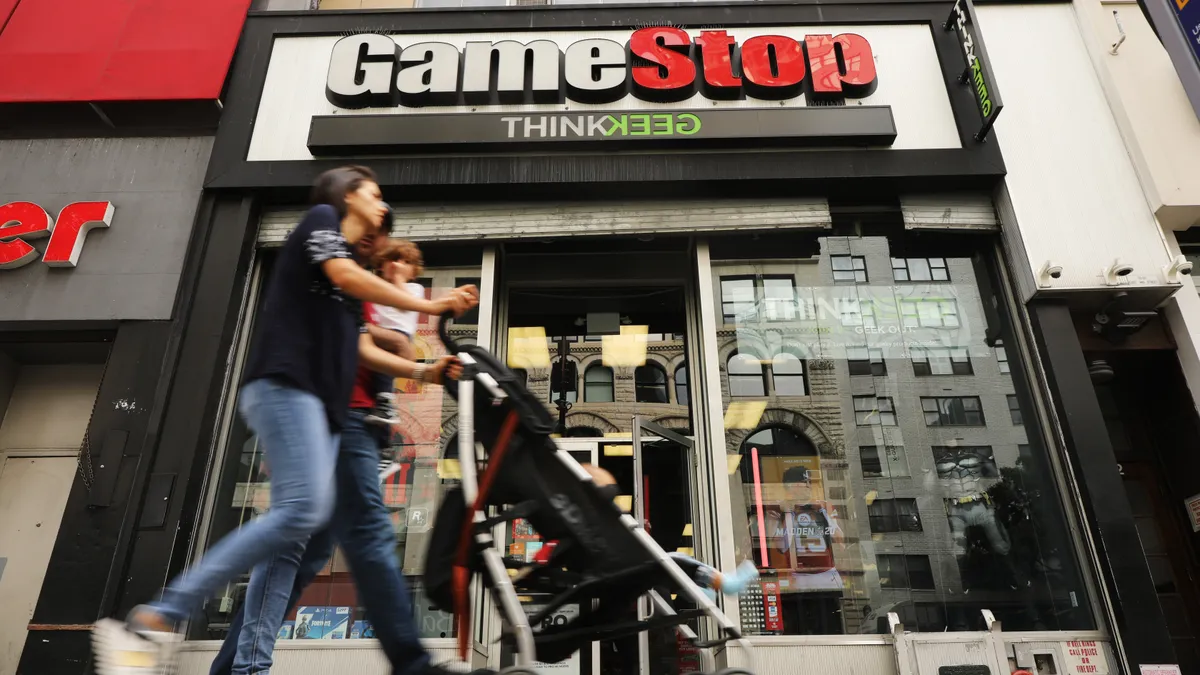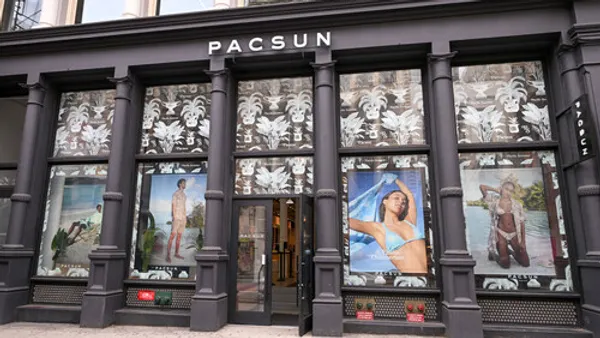Dive Brief:
- GameStop's fourth quarter sales increased 6.2% year to year to just under $2.3 billion while full-year sales rose 18% to $6 billion, the company said in release Thursday.
- The gaming specialist swung to a loss in Q4, with operating loss coming to $166.8 million, compared to operating income of $18.8 million last year. For the year, operating loss widened by 55% to $368.5 million, while net loss widened by more than 77%.
- The retailer also announced it would launch its planned marketplace for non-fungible tokens by the end of Q2 this year.
Dive Insight:
In years past, GameStop's losses have been tied to sales declines as the retailer — the last national gaming specialist and one of a beleaguered few media retail chains left in the country — ran up against digitization of its core product and cyclical headwinds in the sector (i.e., hardware changeovers).
Last year, on the other hand, GameStop's loss widened as its sales grew — a common theme among e-commerce and technology companies.
That perhaps should come as no surprise (although the Q4 loss did come as a surprise to analysts, with consensus estimates predicting positive profit). In late 2020, Chewy founder Ryan Cohen launched an activist campaign against GameStop calling for it transform into a digitally driven technology company.
Cohen went on to join the retailer's board last year and then take the helm as chairman. From there a flood of executive departures and arrivals have reshaped GameStop.
Cohen built Chewy into a formidable player in the pet category amid the ascendance of Amazon in all things e-commerce. The digital pet seller also has a long history of unprofitability and, under a different CEO, is still struggling to convert sales growth into profits.
In an earnings call GameStop CEO Matt Furlong, who joined last year, did not offer an explanation of the losses. "As indicated in the past, long-term sales growth is the primary metric by which we believe stockholders should assess our execution," Furlong said, according to a Seeking Alpha transcript.
Furlong noted that GameStop is spending money on inventory "to drive pragmatic growth and meet demand amidst global supply chain issues" while also trying to build up its cash position.
Summarizing 2021, Furlong said, "The first year of our transformation was about starting to turn GameStop into a customer-obsessed technology company, one that has wider offerings, more competitive pricing, faster shipping, stronger customer service and an easier shopping experience."
Furlong also pointed to a future for GameStop built in part on nascent technologies and trends, such as NFTs, cryptocurrency and Web 3.0. "We have learned from the mistakes of the past decade when GameStop failed to adapt to the future of gaming," Furlong said. "We've also had to change the way we assess revenue opportunities by starting to embrace, rather than run from, the new frontiers of gaming."
Along with its future-minded moves, GameStop has partnered with brands, including PC Gaming companies that helped grow the company's sales in that category by 150%, as well as redesigning its mobile app and growing rewards membership.
The company offered no estimates for the year ahead. Furlong said only, "What we are comfortable saying is that we anticipate growth across our stores, e-commerce properties and blockchain gaming offerings."















